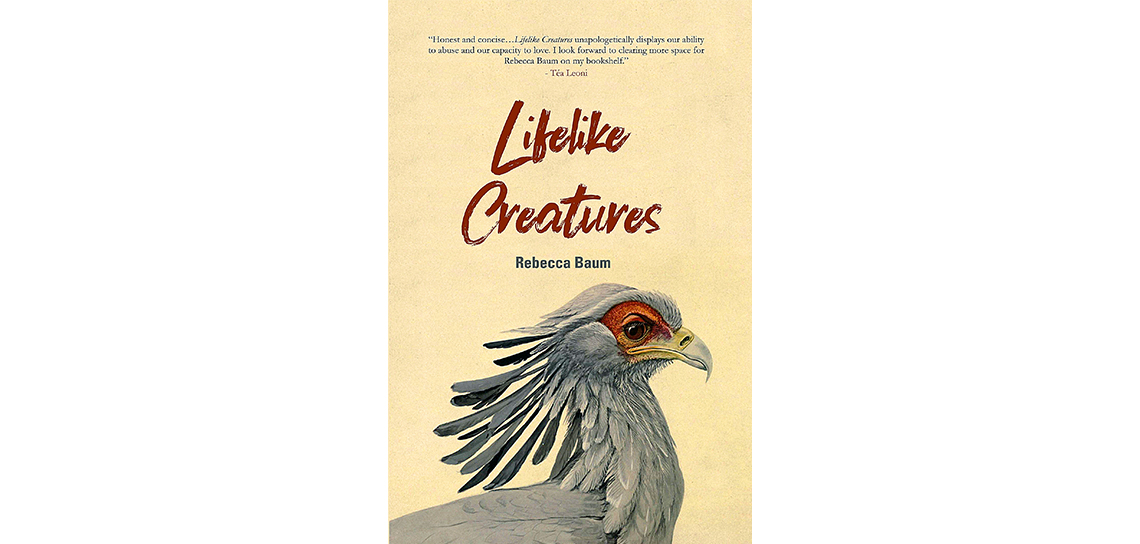Off the Page: ‘Lifelike Creatures’
In the late summer of 2012, residents of Bayou Corne in Assumption Parish began experiencing strange tremors beneath their swampy parcels of crawfish-laden landscape. Next came unexplained bubbling on the surface of the bayou, along with whiffs of an odor suspiciously like petroleum. Next thing they knew, the state government had issued emergency evacuation orders due to a machine-made disaster perhaps more familiar in the realm of sci-fi than in the humdrum of rural life: a sinkhole. A big one, too. Reservoirs for crude oil stored underground in millennia-old salt domes had contributed to the collapse of one of the domes’ outer walls, resulting in the release of poisonous gas and the swallowing of cypress trees and personal property alike.
So sets the scene of Rebecca Baum’s debut novel, Lifelike Creatures, a fictionalized account of 2012’s environmental negligence in the make-believe backwater of Terrefine, Louisiana, where the beautiful addict Joan Saint-Romaine and her 13-year-old daughter Tara scrape out a life from the bayou’s edge. In what could be described as equal parts legal exposition and melodramatic family crisis, Baum crafts a narrative stuffed with corrupt governments, cringe-inducing oil magnates, well-meaning lawyers and a side of misguided parenting as she follows Joan and Tara through the loss of their home to the effects of the sinkhole. A highly publicized legal battle to punish Big Oil ensues, as does the daily struggle to balance a wobbly mother-daughter relationship tainted by drugs and alcoholism.
Anyone delighted by representations of life in south Louisiana will find comfort here, in musical names like Blake Brouillette, tender bites of squirrel gumbo, and a brief interlude in New Orleans’ famed Music Box Village which accompanies a sudden tailspin of events. Readers will discover the horse-riding taxidermist Mrs. Honoré, the sticky journalist Chase Robichaux and the media-wrangling Lydia Desaurus, among others, all circulating a point of view (mostly) attached to the most vulnerable player of all, the young Tara Saint-Romaine, whose confusion and horror stands in for our own.
To see a writer tackle environmental issues so close to home is a refreshing turn for fiction and will, at the very least, inspire more than a few Google searches to the tune of “This can’t have really happened … right?”












